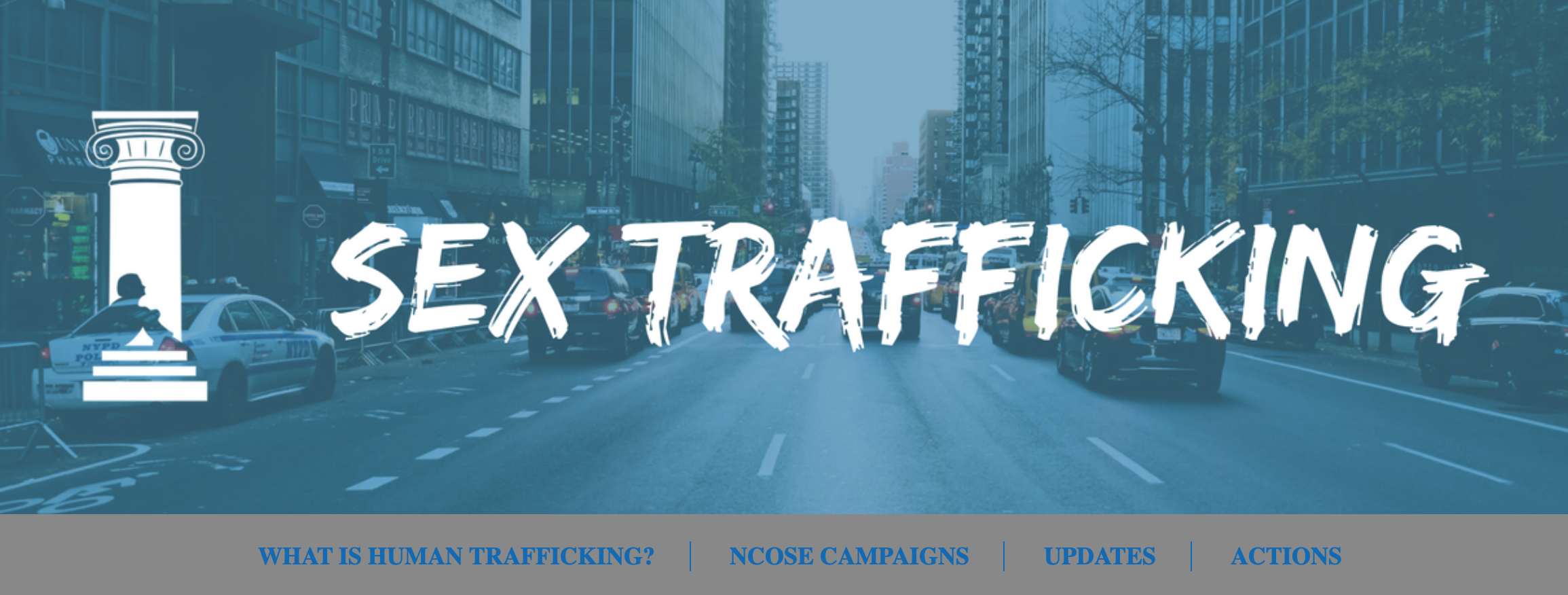Recently the media and social media platforms have been flooded with claims that the popular furniture company, Wayfair, is participating in or complicit with child sex trafficking.
Beginning as a random musing from one individual who noted a perceived discrepancy on a web page for a specific Wayfair product, theories have since taken on a life of their own and have claimed that, through listings for industrial cabinets and other items that appear to be exorbitantly priced by tens of thousands of U.S. dollars, Wayfair is being used for sex trafficking right before our very eyes. Although giving furniture products/product lines a human name has long been a common practice across the industry, theorists have used the fact that many of the items on Wayfair’s website display different human names as fuel for their speculations. As a result, individuals have hypothesized that, because the prices fluctuate and names vary on each listing, this must be because children are being continuously sold as a part of a global pedophilic sex trafficking ring.
All of this is being spread widely without any real corroborating evidence and in spite of the fact that there are normal explanations for these occurrences.
We know it’s difficult to completely alleviate the worry that many well-intentioned theorists are feeling regarding the claims about Wayfair’s alleged involvement with child sex trafficking because 1) there is not yet definitive evidence proving the allegations to be false beyond a shadow of a doubt and 2) there are places where children are sex trafficked online.
However—based on data, experience, and a review of the evidence available prior to the publishing of this piece—we believe that the accusations being leveled against Wayfair regarding sex trafficking are lacking credibility in significant ways and, in many places, demonstrably false.
The Wayfair sex trafficking story is far from the first sensationalized trafficking-related theory to go viral and, if history is any guide, it won't be the last. That can be a problem for victims of sex trafficking. Share on XThat being said, in light of the far-reaching and well-meaning concern that has been generated regarding the sobering matter of human trafficking, we thought it was important to take this opportunity to make clarifications and clear up misconceptions about sex trafficking that we have seen spreading like virtual wildfire across media platforms in recent weeks (and months and years).
The Wayfair sex trafficking story is far from the first sensationalized trafficking-related theory to go viral and, if history is any guide, it won’t be the last. That can be a problem for victims of sex trafficking.
Due to its portrayal in popular culture and myriad viral hoaxes that have circulated on social media, there are serious and widespread misunderstandings of what sex trafficking looks like and where it occurs. We cannot simply ignore ill-informed takes on sex trafficking because the vast and pervasive subconscious acceptance of the narratives they create make it more difficult to spread the truth and implement effective change and reform.
One example of this is the public perception that most trafficking victims are locked up or imprisoned with literal shackles. This has been true in a minority of investigated cases, but it is far from being the norm or status quo when it comes to sex trafficking and prostituting people. Most victims are groomed and held captive through intense forms of psychological abuse, manipulation, and coercion that can be difficult to identify.
Elsewhere, many viral conspiracies about the abduction of trafficking victims involve dramatic kidnappings that happen randomly in crowded public areas. In reality, as alluded to above, traffickers prefer to develop relationships with their targets—sometimes virtually and sometimes in-person—in order to methodically groom and traffic them in ways where there is very little evidence discoverable to the untrained observer.
In recent years, some have circulated sensationalized theories regarding sex trafficking, pedophilia, pizza restaurants, and underground bunkers where a secretive global elite rapes and feasts on the blood of child victims (often referred to as “PizzaGate” or #PizzaGate). These theories were originally spun up around the 2016 U.S. presidential election and have since morphed and changed to be known as “QAnon” and to include new phenomena such as the global COVID-19 pandemic (among many other things). Although the bulk of these theories are not based on meaningful facts or credible evidence—indeed, many of their aspects have been found to be false—they have gained traction online and distracted potential anti-trafficking allies and advocates from seeing and understanding who the data shows is actually purchasing sex illegally and actively exploiting trafficking victims above ground in their local communities.
There *is not* yet credible evidence re: child sex trafficking occurring via Wayfair. There *is* verifiable evidence that child sex trafficking is happening via hotels, social media apps, and porn sites like Pornhub (#Traffickinghub). Share on XAdditionally, although women, children, and men of color are victims of sexual abuse, exploitation, and trafficking at a disproportionate rate, it’s a myth that most sex trafficking involves shipping trafficking victims to and from international locales. In America, sex trafficking often happens within or very close to your local community.
One element of the current concern regarding Wayfair that at least has a basis in reality is the way that sex trafficking can be perpetrated using mediums that are otherwise relatively benign. Sex trafficking happens in places that you—yes, YOU!—have likely visited in the past year, the past day, or even the past hour.
However, unlike many of the details cooked up regarding Wayfair, sex trafficking is most often perpetrated in ways which don’t create the sort of paper trail that the alleged crimes surrounding Wayfair would. Traffickers aren’t forced to go to such elaborate lengths as imagined by Redditors when much simpler, easier to access, and less-traceable means are available to them.
Accordingly, we wanted to break out three common places that the data—and survivors themselves—indicate that adults and children are being sex trafficked and specific ways you can take tangible action today to fight this scourge.
1. Sex trafficking is perpetrated online via prostitution sites and via pornography websites.
Prostitution websites are major hubs for sex trafficking in the modern world. Additionally, more and more evidence and testimony is emerging which shows that one of the largest and most well-known online pornography platforms, Pornhub, and similar sites are also hubs for sex trafficking. We have seen clearly and spoken out about the reality that pornography and sex trafficking are inextricably interwoven. In fact, the business models of sites like Pornhub are built to profit from and encourage sexual abuse and exploitation.
Sites such as Pornhub do not require verification of consent for any videos uploaded. This means that, in any video hosted by the site, it is unclear to the viewer whether or not the “performers” were coerced. Recently, the Traffickinghub campaign has made these issues apparent, as more and more survivors have come forward to share their stories.
Many of these popular pornography sites are so-called “tube sites” that offer “free” content and they rely on user-generated content to fill out their “offerings” without verifying consent or age in videos. As a result, the content often features the literal rape of trafficking victims. In many cases and even though they claim to manually review uploaded content, Pornhub has refused to take down these videos and has continued to profit from them and be complicit in the abuse and exploitation perpetrated by the traffickers and commercial sex buyers who create the “content.” Prominent pornography production companies, like GirlsDoPorn, have also been found guilty of creating pornographic content in a manner that included fraud, force, and coercion — sex trafficking — of women and minors directly.

Though much of the content on these sites is not behind a paywall of any kind, there are also “premium content” offerings and subscription-based sites such as OnlyFans are becoming more popular. However, they too are hubs for sexual abuse and exploitation. Payment processing companies like Visa, Mastercard, and Discover continue to provide options to access this type of content. This means that they serve as a middleman between sex traffickers and the audience and that they facilitate and prop up the demand for such content.
PayPal has cut ties with the pornography industry and we believe that other corporations must do so as well.
Take action with Visa, Mastercard, and Discover here:
2. Sexual abuse, exploitation, and trafficking occur via popular social media platforms such as Instagram, TikTok, and Snapchat.
Based on survivor testimony and research, sex traffickers and child predators appear to be increasingly using popular social media apps such as Instagram, Snapchat, and TikTok to identify, groom, and exploit children in the online space.
How does this happen? In many of the cases on many of these platforms, minors are receiving unsolicited direct messages from strangers who will often pose as peers or as cohorts from nearby areas. This type of direct grooming via social media platforms has led to several reported (and probably many other unreported) instances of sex trafficking and child sexual abuse. In other instances, adults who may know the children outside of the platforms will use the platforms as a means to groom the children for sexual abuse and rape.
There are also countless instances where predatory adults find photos and videos of minors on social media and then proceed to post sexually graphic comments and even solicit sex from the children. We have also heard directly from survivors about how their traffickers would force them to perform sexual acts on Instagram Live as though they were consenting even though their abuser stood just out of frame.

Accordingly, we believe that corporations and online platforms should take greater responsibility in protecting their users, especially minors, and we have put a lot of time and effort into advocacy and direct engagement efforts with these tech corporations to influence change and have recently made exciting progress in this regard with both Instagram and TikTok.
There is still much work to be done, though, and you can help make more positive change happen by getting educated and then sending messages to executives at TikTok and Snapchat with one click:
3. Sex trafficking occurs in hotels and motels including big chains such as Marriott and Wyndham.
Hotels are used as places of business for traffickers because often they can pay in cash, keep “transactions” anonymous, and sell trafficking victims more than one time per night (up to 10-15 times, in fact) using multiple rooms as meeting places.
Recently, the National Center on Sexual Exploitation Law Center signed on as co-counsel in a case where Wyndham hotels were knowingly facilitating sex trafficking. In this one case alone there were countless examples where evidence of abuse and exploitation were in sight of hotel employees and yet no one took the responsibility to investigate or contact any law enforcement officials.
In the case of this lawsuit, there was an endless parade of older men coming in and out of the child’s room, large quantities of used condoms left in the room, excessive requests for sheets and room cleaning services, and other obvious signs that the hotel employees clearly and willfully ignored.
As tragic and heartbreaking as this case is, it is not an isolated example. Other hotels have been faced with and are facing lawsuits regarding sex trafficking. Worse yet, we know that there are many other instances that haven’t even come to light period—let alone to trial.
You can take action today by signing our petition to Wyndham executives which demands that they prioritize the fight against sex trafficking:
What Else Can Be Done to Fight Sex Trafficking?
Mary Bianculli, a former NCOSE intern who later spent time as a case worker with survivors of trafficking at Selah Freedom, recently summed up the problem with the Wayfair sex trafficking conspiracy this way:
“People [would] rather believe that trafficking exists outside of [their] daily lives, where the elite roam. However, the reality is that trafficking exists in our own neighborhoods.
Similar to cases of rape, trafficking rarely happens in back alleys by strange men.
Trafficking typically occurs after years of grooming and coercion and it takes place in almost every community in the United States.
Almost every survivor I worked with considered their trafficker to be their boyfriend at some point in their lives.”
Sex trafficking is certainly a dark and shadowy crime, but it is not a dark and shadowy crime that only exists and persists in the abstract of “somewhere else.”
We’ll say it again for emphasis: Sex trafficking is happening in your community.
Accordingly, combating sex trafficking starts within your own home by appropriately educating and equipping yourself, your children, and your community to recognize its true signs—not the hoax ones that create panic on social media—in age-and-context-appropriate ways so they can help keep themselves and their peers safe.
Beyond social media activism, here is a list of tangible ways you can be actively anti-trafficking:
- Share responsibly-sourced information. Parents, educators, health professionals, and law enforcement need to become educated on signs of trafficking rather than viral hoaxes.
- Educate children about potential harms that come with the use of technology. Technology doesn’t need to be feared or shunned, but individuals, parents, and families alike must understand and address its potential harmful realities with sober-minded judgment and wisdom.
- Maintain involvement in your use and your children’s use of technology. Lead by example and keep conversations about tech use open and ongoing in your home.
- Invest time in implementing parental controls, filters, and other software solutions that can help protect children in the digital space. They don’t solve every problem, but they definitely help limit opportunities for exploitation.
- Invest in programs that keep children safe. Our world is filled with new spins on old threats and organizations like ours and others who make up the Coalition to End Sexual Exploitation Safeguard Alliance work hard to make the world safer for children and to equip parents with crucial information for making better-informed decisions for their families.
- Invest in organizations that lift people out of poverty. Traffickers often choose and target victims in vulnerable populations and groom them with promises of provision and sustenance.
- Hold corporations accountable for the platforms they have created that facilitate sex trafficking and other forms of sexual abuse and exploitation. You don’t have to stand idly by while technology companies do the same. You can use your voice in targeted ways to make a difference.
No matter how involved you are able to be in this moment, hold on to hope! Victories are being won in these dark spaces and momentum is growing to see them eradicated entirely.
So let’s stay the course and continue to build a world free from sexual exploitation!


